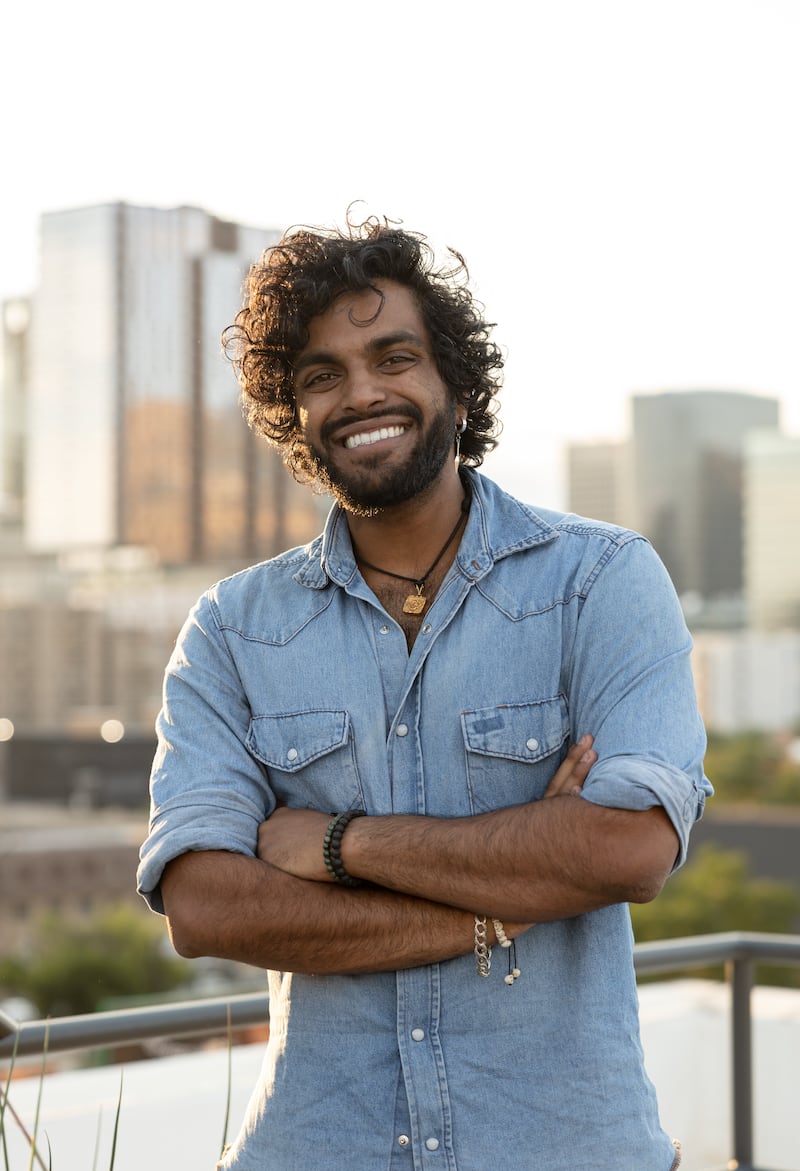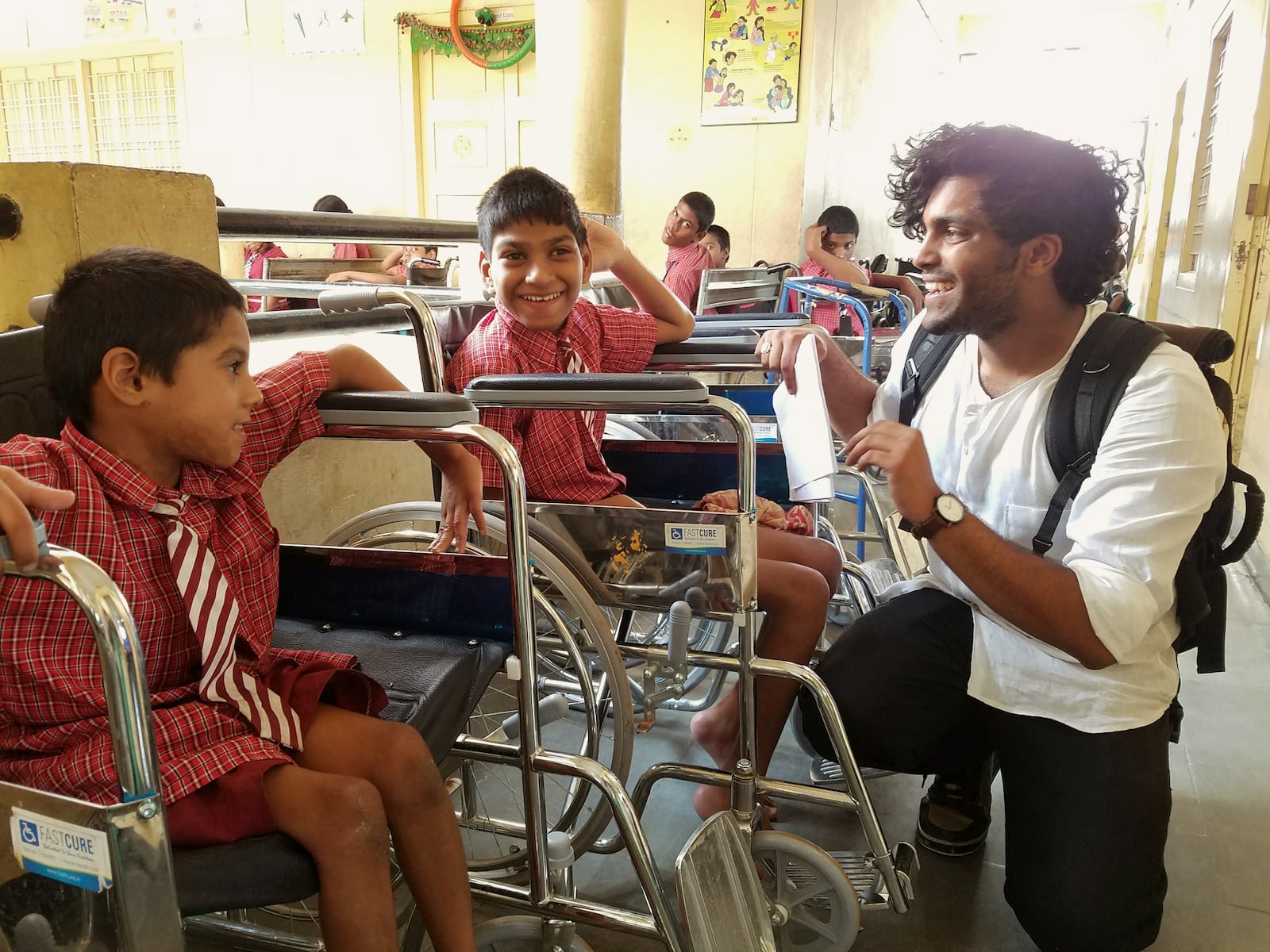I wanted to become a doctor since I could pronounce “fever.” The grandfather I was named after died of a heart attack early in his life, and I knew doctors could help save people. Maybe I could help other grandpas live longer.
I was a pre-med student embarking on that path when, in 2018, I dreamt up Project Embrace in my dorm room.
While volunteering at Shriners Hospital for Children in Salt Lake City, I made braces and prosthetics for children for the orthotics and prosthetics department. The hospital had a “no insurance, no questions asked” policy, meaning we often saw patients travel from the world’s most remote places to receive medical care.
I spent hundreds of hours and thousands of dollars making braces and prosthetics for the kids who needed them, often seeing them walk for the first time. The same families we helped would come back months later, though, because their child had grown a few inches and put on 20 pounds. They would outgrow these prosthetics and braces; what we gifted them was no longer necessary, or they’d require a new device.
Unfortunately, people didn’t know how to deal with used equipment. They’d think it was easier to get rid of it. However, these medical devices were not designed to be discarded; you couldn’t easily recycle them, and destroying them costs money. Everyone in the medical field appeared to know that, but there wasn’t much anybody could do about it.
Part of my job as a volunteer was throwing the returned braces and prosthetics away, and it felt so wrong. An experience I had as a boy in India was probably why.
My life mission: Help other people
My parents took me to India when I was young, where we toured an orphanage for disabled children. These kids were victims of trauma or had conditions that couldn’t be helped. Many had been left behind or considered secondary. Because I was born and raised in West Jordan, Utah, I had never seen anything like that level of poverty and inequality before.
Kids were hopping, scooting and crawling around in the dirt, but they had the biggest smiles on their faces. They wanted to play with me, but I didn’t feel the same way about them. I felt a mix of disgust, anger, guilt and shame. It was an overwhelmingly frightening experience.
More than anything else, I wanted to go home. When I asked my mom why we were there, the orphanage director overheard me and shared that my parents had donated $5,000 to the orphanage to help build a schoolyard. That was a substantial amount of money and a considerable sacrifice for them.
My mom then told me I’d ask myself a lot of soul-searching questions one day. Was I doing the right thing? What’s the meaning of life? What was my purpose? And while so many others would try to give their answers to those questions, she said it would all be rubbish — just total nonsense.
In her eyes, it wasn’t complicated. She told me that my purpose in life is a simple three words: help other people. That’s all; nothing else matters. There were people around me every day that I never paid any attention to, but she told me to become aware of them. Serve those people, too. She told me they were as important as the people I already cared about.
It’s rare to experience a turning point as a 10-year-old, but that was one of mine.
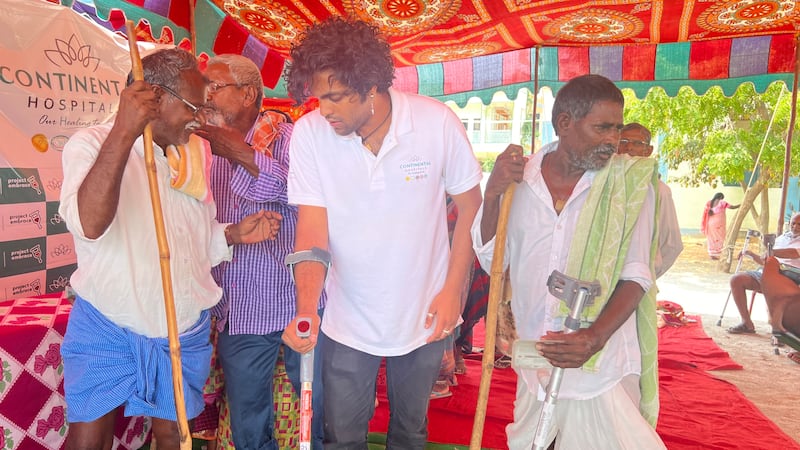
There is no price on human dignity
A few years ago, I was throwing used prosthetics and braces away. I remembered the children I met at the orphanage in India. I’d see their faces in my head and consider how they would have loved to have what we were letting go to waste. My job was to dispose of this used equipment, but I could no longer rationalize doing so.
My idea was simple: take everything we no longer needed and give it all to those who did. In effect, we would recycle medical braces and prosthetics. Project Embrace began.
It was a good idea in theory, but there were immediate obstacles. For example, you can’t just exchange a back brace; it won’t work the same from one person to the next and may even cause added harm. However, generalized devices like wheelchairs and crutches that helped people with mobility could work. After all, quality of life is as important as addressing pathology. In the orphanage, I saw wheelchairs made of lawn chairs and bike parts. In our community, I saw people pushing around loved ones in beat-up shopping carts. They could benefit so much from a program like this.
“Because we chose people over profit, we survived the pandemic. Because we refused to give up when it made sense to do so, we are now thriving.”
— Mohan Sudabattula
There was also a belief that a similar program already existed. Doctor friends and mentors said my idea sounded like an Eagle Scout project. It wasn’t groundbreaking. But the more I researched it, the more people started seeking me out, sending regular messages about crutches they no longer used. Wheelchairs were sitting around, gathering dust. People stockpile these things because they can’t throw them away. They wanted someone in need to use them.
There were few options for what to do with used equipment. Project Embrace quickly became one of only a few in the nation and is now one of the top medical device brokers in the Western Hemisphere. We were able to grow because no one else was talking about these issues. Project Embrace was able to act as the grout where some people fell through the cracks. We created medical supply chains in historically underserved areas.
The best part? We give everything away for free because we believe there’s no price on human dignity.
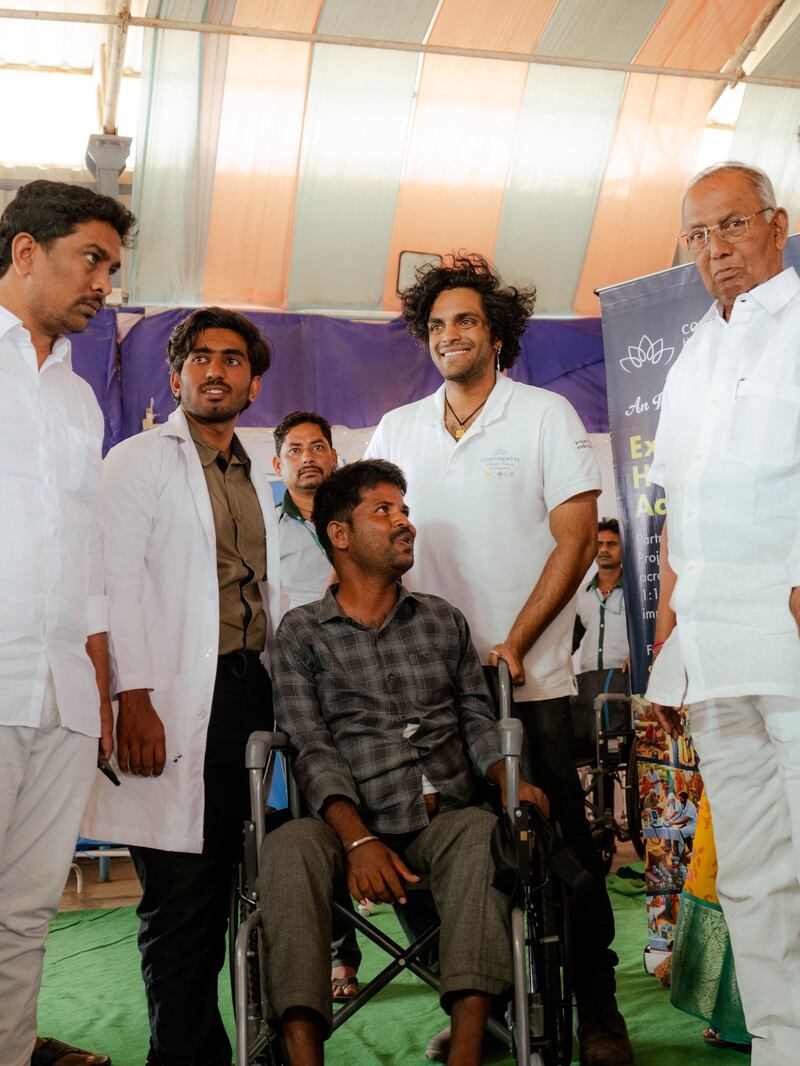
Building trust in healthcare
People don’t like talking to healthcare providers, usually because of mistrust or too many unknowns. Project Embrace was viewed differently because we approached it differently.
We weren’t making any money during the pandemic. Donors had cold feet because markets were terrible. At the same time, the demand for what we provided skyrocketed. We should have shuttered for good, but we refused to die.
In order to survive, I did everything I could think of to keep us growing, which meant being open to new ideas. Selling medical equipment at a discount seemed to be a viable business model, but that wasn’t an option in the lower-income communities we worked with.
We realized we had so many opportunities to show up and help, and something miraculous happened. We connected with American Indian reservations, clinics and small community institutions with one message: We had the help they needed.
We showed up with massive trucks of medical equipment and handed it all over.
Then, more equipment came our way. Donations continued. Again, we had the privilege to give it away. That kept happening. As a result, a strong trust formed within these communities. We learned how badly they’d been affected during the pandemic — some far worse than others. Because most of rural America comprised blue-collar workers, they were deemed “non-essential.” Everyone was furloughed. Even though alcohol was illegal on the reservations, bootlegging was increasing. Drug abuse was going up.
There was such an influx of problems discussed that we began documenting them. Now, we were no longer just supplying clinics. We began supplying women’s centers, community centers and food pantries. We were getting into small, underserved niches, and people invited us into their lives.
What we were providing became more oriented toward greater health and dignity. After two years of doing that, we wrote to the United Nations. There was a call for papers around sustainable development goals, and we spoke in great detail about Native tribes, what the pandemic had done to these communities, and how nonprofits like ours could help.
The paper was published in its entirety. In short order, Project Embrace was recruited to consult with the World Health Organization and UNICEF. Conversations around the purpose of supply chain had changed, and production was not a priority; resilience within rural communities was. No one could afford what we could provide. We knew how to refurbish medical devices so we could fix and add more value to ones that still had many miles left.
We were invited to distribute that knowledge, helping with anything from seminars to training. That grew our international and global platform while we simultaneously did the work in Utah. It opened up opportunities and partnerships we now regularly engage in to provide humanitarian aid relief, allowing us to send medical devices and supplies to places like Gaza, Ukraine, Syria and Afghanistan. The greater goal was and is to introduce future clinical and medical services from other providers.
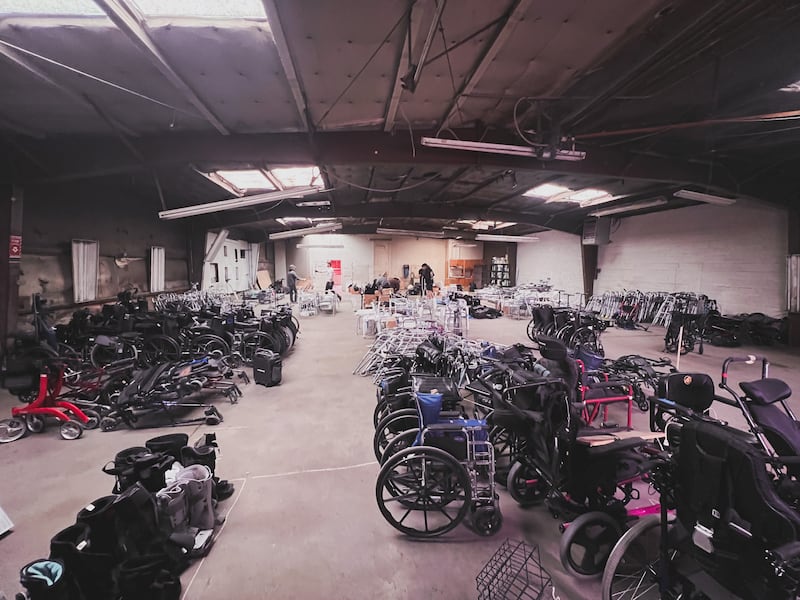
Way more than free wheelchairs
Healthcare should be about building relationships and establishing those channels within communities. It’s not about money. It’s about doing the right, most necessary thing: giving everyone access to dignified healthcare.
Early on, Project Embrace chose integrity over financial gain. Committing to doing the right thing as a company ultimately became the best decision we could have made for our business and the growth that’s come from it. We found that was a far more valuable way to move forward. That idea often gets lost in healthcare, especially in a world still scarred by the pandemic. A reframe needs to happen, and it’s not hard to see the demand for that.
Because we chose people over profit, we survived the pandemic. Because we refused to give up when it made sense to do so, we are now thriving.
Project Embrace has a real opportunity to redefine what healthcare means or how it is experienced. We believe it takes individuals to recognize a problem, but it takes communities to realize the solution. Healthcare is a community, too; it should be about uplifting and caring for each other. It’s about dignity, access, listening and receiving. Everyone’s voice is important.
The nonprofit sector has grown used to this idea of begging and being a charity case. They have forgotten how to sell themselves as viable, innovative solutions. At Project Embrace, our vision is a lot more hopeful and dynamic. We have restoration events to refurbish our medical equipment, giving people a hands-on experience in healthcare. We host late-night events that showcase the intersection between the arts, music and social impact. How we look at healthcare, medicine, and disabilities starts with us. Shifting these conversation is how we will solve problems as a community.
By investing back into those around us who feel they can’t trust medicine or healthcare, we redefine what those institutions look like. We provide a different take on next-generation leadership, and old barriers fade. Medicine and healthcare need to be taken seriously by being accessible and approachable.
At Project Embrace, we’re more than a nonprofit giving away crutches; we are about crafting access to dignified healthcare. Like my mom told me when I was a boy, it’s about helping others. Nothing else matters.
